Faraday electric car plant expected to make big impact in Las Vegas Valley

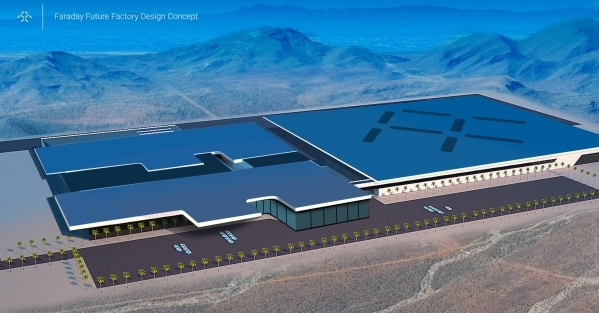
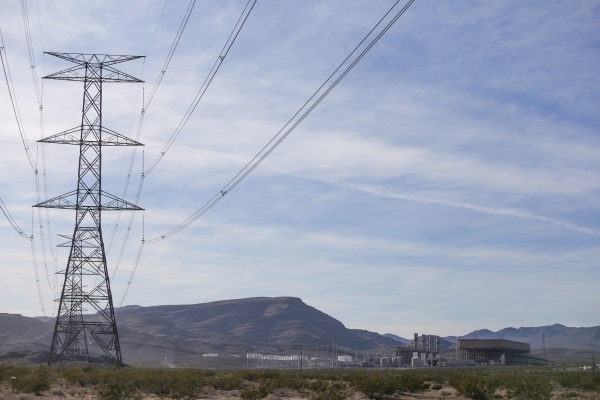
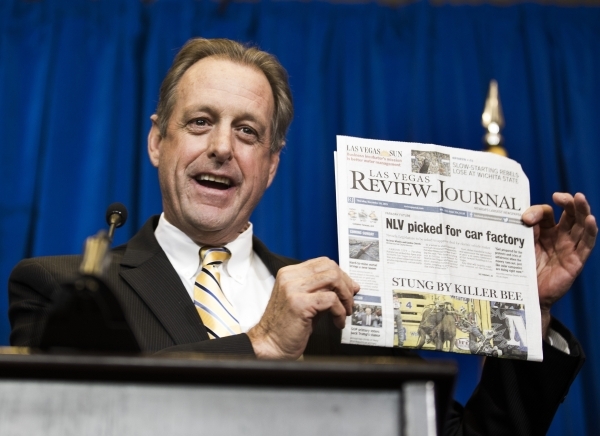
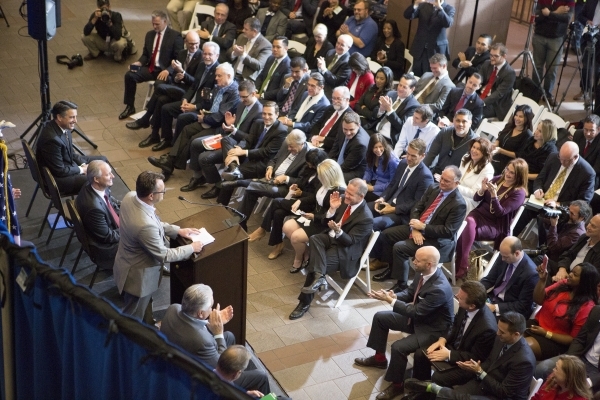
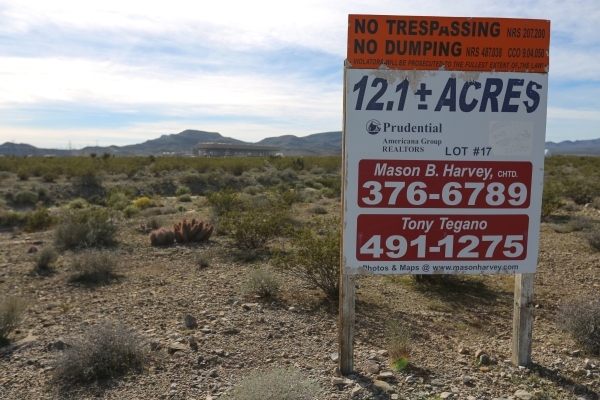
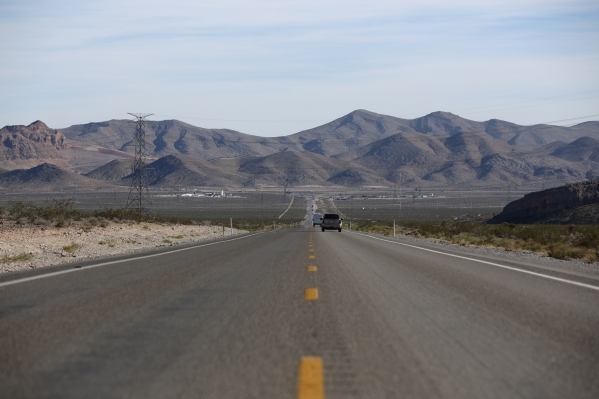
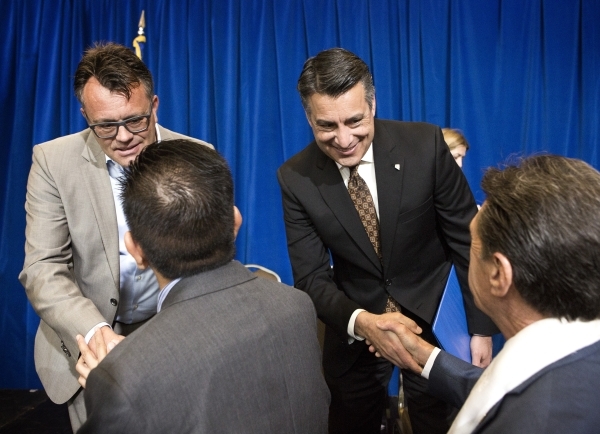
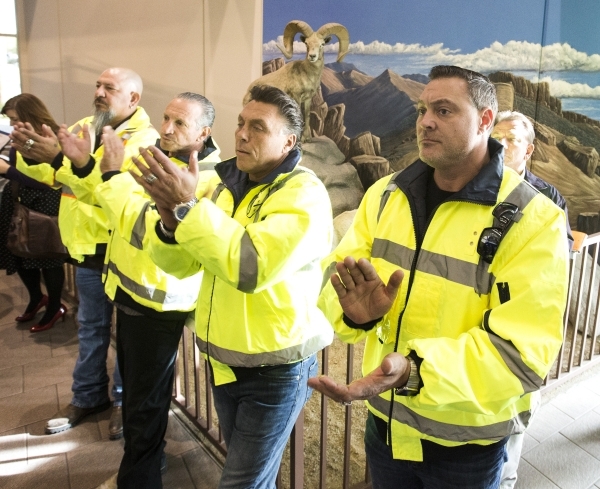
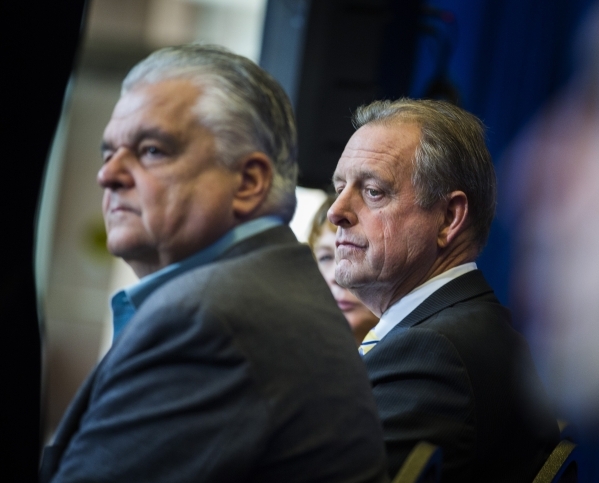
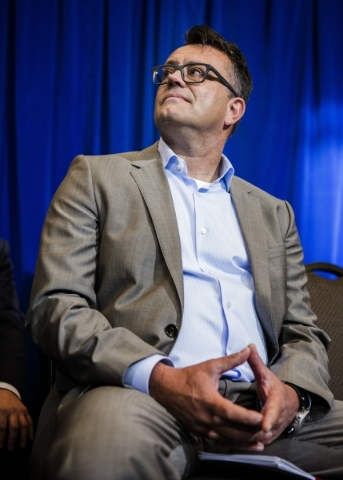
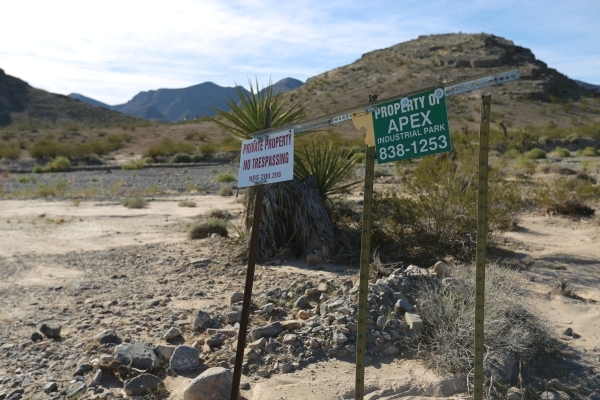
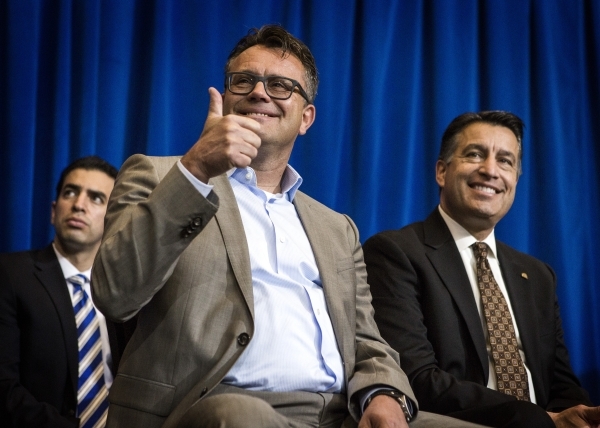
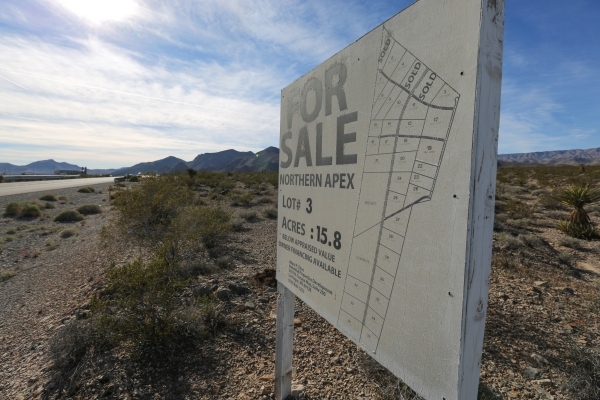
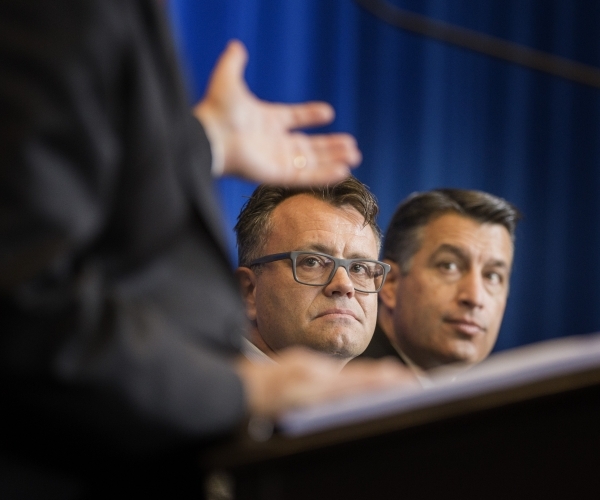
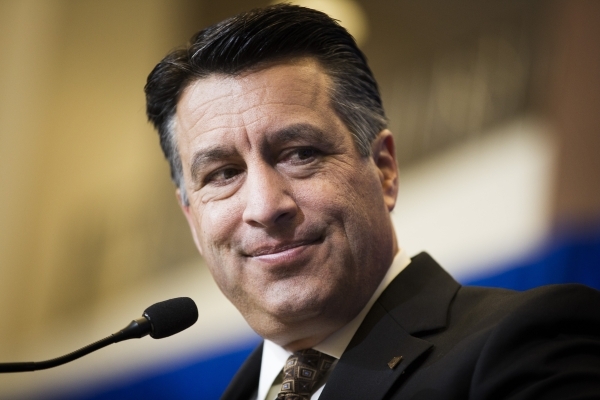

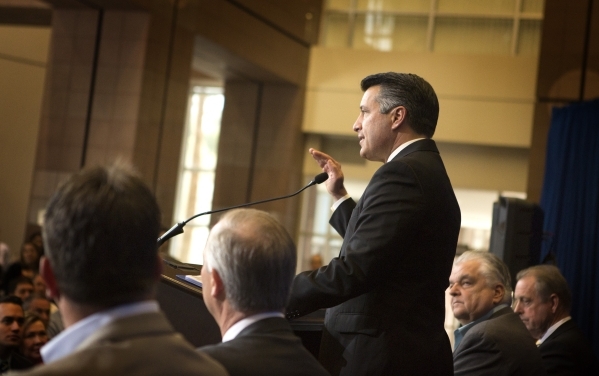
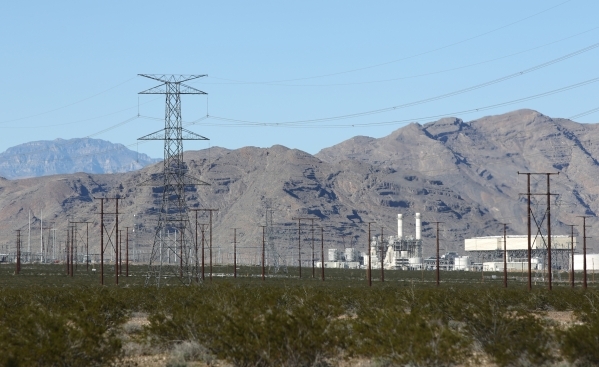
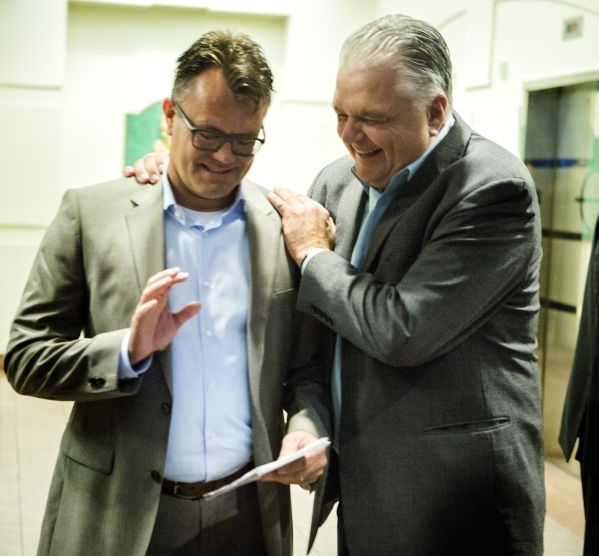
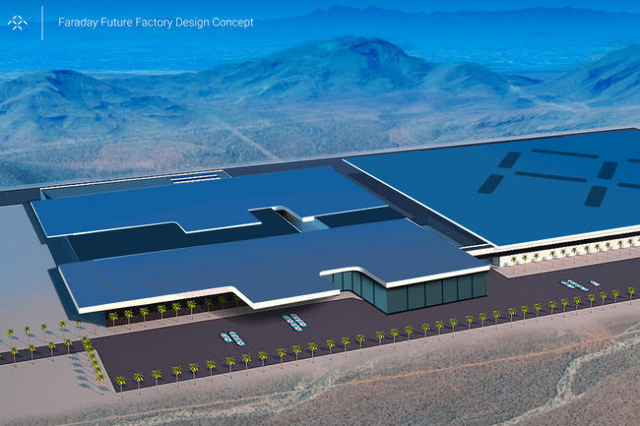
By the time the first Faraday Future rolls off the assembly line at the company’s 3-million-square-foot automobile plant at North Las Vegas’ Apex Industrial Park in late 2017, a large portion of the company’s 4,500 employees will be furnishing their new homes, buying groceries and living the Southern Nevada lifestyle.
That’s what state government leaders are counting on to justify tax abatements and credits leaders are proposing to offer to Faraday to invest $1 billion to build what would be a revolutionary 100 percent electric car that would give the vehicle’s occupants unprecedented connectivity to the world and a range they say would be greater than any electric car ever produced.
The name Faraday is a tribute to English scientist Michael Faraday, who lived in the early 1800s and conducted research in electromagnetism and electrochemistry.
Dag Reckhorn, Faraday’s vice president of global manufacturing, acknowledged that producing a car from a nonexistent factory within two years is a huge challenge, but he added that the company hopes to break ground in first-quarter 2016, possibly as early as January. Components and equipment would arrive by railroad on a spur that makes the plant site so appealing.
The factory would be in Apex, a rocky and dusty outcropping northeast of town overlooking the Las Vegas Valley.
Faraday chose the site over locations in Georgia and Illinois that offered usable auto plants and better relocation incentives because it likes the business environment Nevada offered.
With the arrival of Faraday employees and an estimated 9,000 indirect jobs — suppliers and additional service industry jobs to support the Faraday increase — the region would experience economic growth of $85 billion over 20 years. The taxes the new arrivals would put into the system should be more than enough to justify the tax breaks Faraday would receive in return.
In addition to the anticipated 13,500 permanent jobs there would be about 3,000 construction jobs.
The boost would represent a dramatic turnaround for North Las Vegas, which less than a decade ago was on the verge of financial collapse.
Once the plant has matured, state officials are estimating that there will be an additional $230 million in state general fund revenue, $270 million in local government revenue and $260 million in K-12 education revenue over 20 years.
In addition, Faraday has pledged a $1 million-a-year direct charitable contribution to K-12 education over six years beginning with the 2018-19 school year.
Meanwhile, the estimated value of the incentives the state would offer would be $217 million over 15 years, depending on the actual total of the investment. The state would monitor Faraday’s employment and investment commitments and not release funds in the incentives until verified. The state would do that by requiring Faraday to pay its standard tax rates into a trust fund that would be accessed after investment and employee thresholds are reached.
Gov. Brian Sandoval announced details of the deal in Las Vegas on Thursday and will next work to persuade the Nevada Legislature to approve a package of two to four bills that would spell out everything the state will offer and what it will expect in return.
State leaders said the strategy minimizes risk to Nevada taxpayers and places a greater burden on Faraday to deliver on what it has promised.
Next stop: Nevada Legislature
The deal hammered out with Faraday after about a year of negotiations with state and local officials next heads to the Nevada Legislature.
Sandoval said he will call lawmakers into special session to approve the tax incentives and other provisions of the agreement.
No immediate date was set for the session to convene, but Sandoval hinted the call summoning lawmakers to Carson City could come as early as Friday.
The Faraday deal pales in comparison to the $1.3 billion in tax incentives lawmakers approved unanimously last year to bring Tesla Motors’ $5 billion battery factory to an industrial park east of Reno.
But officials say both agreements reflect significant investments required by the companies to qualify for tax breaks. For Tesla, that investment must total at least $3.5 billion. Any other company that meets that threshold is entitled to the same perks.
For Faraday, the benchmark is $1 billion.
Steve Hill, director of the Governor’s Office of Economic Development, said in addition to offering Faraday tax deferrals and abatements for property and business taxes over 15 years, the governor will ask lawmakers to develop a new job-training program through the state’s Department of Employment, Training and Rehabilitation called WINN — Workforce Innovations for the New Nevada.
If approved by the Legislature, the program would provide training grants for the recruitment, screening and testing of full-time factory workers for Faraday and future industrial and manufacturing jobs.
Faraday will be required to hire at least half of its workforce from Nevada residents and must provide an average wage of $22 an hour for its workers. That is slightly higher than the average Nevada salary.
Another issue to be addressed in the special session would be to modify a tax increment law addressing water line utilities. The cost of developing an Apex groundwater system is less than what qualifies under a tax increment area outlined in Assembly Bill 497 approved in the last session.
The system envisioned at the plant would cost less than $50 million, which wouldn’t qualify under the program. Legislators also will be asked to expand the parameters of the bill to allow construction of a rail port — an essential for Faraday to ship its cars by rail to West Coast seaports.
While not under the purview of legislative session, the state plans to push a highway project to the top of a development list that would expand the Interstate 15 interchange with U.S. Highway 93 and build a flyover exit from U.S. 93 into the Faraday Apex campus at Grand Valley Parkway. The road project, estimated at $45 million to $50 million, would widen U.S. 93 for five miles from I-15 to Apex Power Parkway from two to four lanes.
Legislators have concerns
While the Faraday plan was widely applauded at Thursday’s announcement, lawmakers were more reserved.
Senate Minority Leader Aaron Ford, D-Las Vegas, said the Democratic caucus supports “sensible efforts to strengthen our economy.”
“Economic incentives are most powerful when they’re used as a tool to invest in Nevadans,” Ford said in a statement.
He said Democrats in the upper chamber “look forward to evaluating” the agreement and whether it creates high-paying jobs for local workers, expands opportunities for other Nevada businesses and diversifies the economy.
Marilyn Kirkpatrick, a longtime assemblywoman from North Las Vegas now on the Clark County Commission, called the Faraday development exciting.
Kirkpatrick has worked for years to try to jump-start Apex as an industrial park and was the driving force behind Assembly Bill 497.
“It is an instrumental piece” to bring infrastructure to the site and showed “there was a path to get there,” she said.
Other lawmakers were cautious about the Faraday agreement, reserving judgment until it is in bill form.
Assemblyman Ira Hansen, a conservative Republican from Sparks, said he is neutral on the deal, but has concerns.
For one thing, Faraday Future is not publicly traded like Tesla, but is privately owned with financial backing from a Chinese billionaire.
“Using Nevada taxpayer dollars to basically subsidize a billionaire makes me uncomfortable,” Hansen said.
But North Las Vegas Mayor John Lee, whose city will benefit from the project, called it a “historic day for the State of Nevada and a transformational event for the City of North Las Vegas.”
He added, “I applaud Governor Brian Sandoval and thank our state lawmakers for their support.”
Bill passage called likely
While the deal is sure to meet opposition from some conservative lawmakers, passage is likely.
Hill said legislative leaders were briefed on developments “throughout the process” and were “conceptually supportive.”
Passage of bills will require a simple majority in the 42-member Assembly and 21-member Senate.
Once the special session is completed, Faraday’s next public appearance will likely be just prior to January’s International Consumer Electronics Show in Las Vegas. Company leaders have indicated they intend to reveal a concept at the show that is expected to draw 170,000 people to the city.
Six months ago, no one had heard of Faraday, a company backed by tech billionaire Yueting Jia, the Chinese founder and CEO of Leshi Internet & Technology, known as LeTV and widely regarded as China’s answer to Netflix.
For the next few weeks — and possibly years in the future — it might become a household name.
“I’ve been telling my team,” Faraday Vice President Reckhorn said at Thursday’s announcement, “that now is when the fun begins.”
Review-Journal writers Sean Whaley and Sandra Chereb contributed to this report. Contact Richard N. Velotta at rvelotta@reviewjournal.com or 702-477-3893. Find him on Twitter: @RickVelotta.












